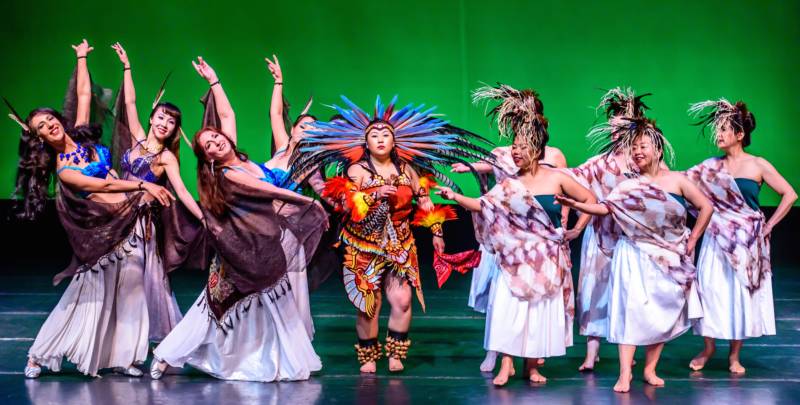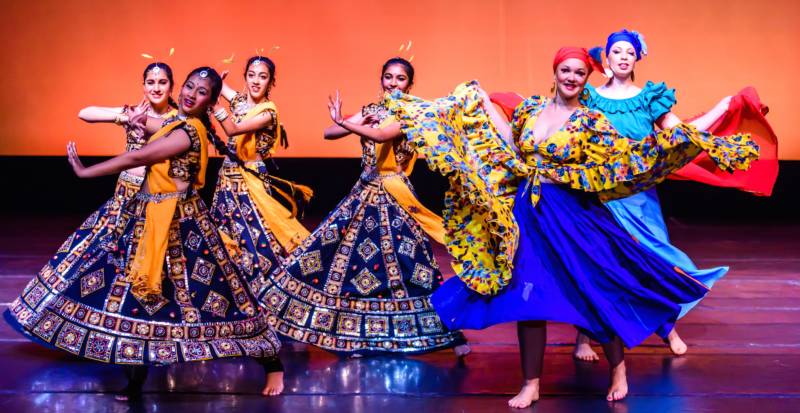In December of 1972, Helen Mirren and a coterie of other actors openly worried that Peter Brook had gone “mad,” and they had a point: The famed British theater director had decided to take the troupe on a 100-day tour across the Sahara Desert and West Africa in four-wheel-drive vehicles so they could perform an interpretation of a 12th-century Persian poem called The Conference of the Birds.
Nothing like it had ever been attempted. But Brook was committed to staging Farid ud-Din Attar‘s parable about birds who struggle to find a higher truth about the divine and their place in the world.
And now Vinita Sud Belani and Usha Srinivasan – directors of two Bay Area arts organizations – are committed to staging Brook’s version of Conference in San Jose. The show will unfold Friday, Sep. 9 – Sunday, Sep. 11 at the Mexican Heritage Plaza. This time, however, the directors are putting much of the focus on dance, as well as giving many of the birds portrayed in the piece cultural specificity.

The production reads as a veritable avian United Nations. Mexican folkloric dancers represent the herons, Chinese dancers, the phoenix and peacocks, Hawaiian dancers the ducks, and belly dancers the partridges. Dance traditions from India, where Belani and Srinivasan have roots, characterize the parrots and exotic birds, while a Persian dancer plays the Simorgh – a Persian bird of mythical origin that’s a God figure in The Conference of the Birds.
Actors and singers also portray birds, including the hoopoe, which organizes the gathering because it sees the world under such stress. “I see nothing but quarrels, desperate fights for a scrap of territory, wars for a few grains of corn,” the bird bellows in Brook’s version. “This can’t go on.”


